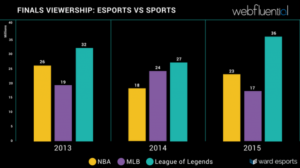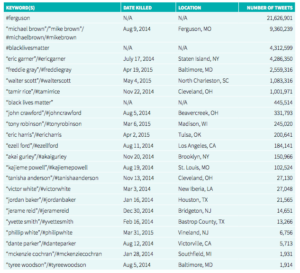Snapchats Success in Facilitating and Maintaining
Ambient Awareness in Users
Jenelle Miles
Curtin University
Abstract
The social media application Snapchat facilitates ambient awareness and actively maintains it in several aspect of the app. Facebook’s position as the leading social network for ambient awareness information has declined and Snapchat is now the main facilitator and maintainer on any social networking platform. This paper explains how Snapchat engrains features in its application to actively maintain ambient awareness, such as; best friends, streaks, filters, stories and Snap Map. The paper will argue these features are vital in the applications success in creating a forum that relies purely on users being interested in the ambient information they receive from other users.
Keywords: Snapchat, ambient awareness, weak ties, strong ties
Introduction
Many academic articles associate ambient awareness with the social networking site Facebook (Levordashka & Utz, 2016). This paper aims to prove the use of Facebook as a social networking site has changed to one where people are consciously aware of their audience and post less mundane information of their day. Ambient awareness still exists heavily in social media, however the application Snapchat is now the main facilitator and maintainer of this information. Snapchat has introduced many features to promote daily usage of the application and contact between users. The application uses these features to create a sense of community between the users who are connected within the network (Ahmed, 2016) and encourages users to uphold strong ties and heightens the possibility of strengthening weak ties (Kramer, et al. 2014).
Discussion
Ambient Awareness is a term associated with the psychology behind social networking sites. Ana Levordashka and Sonja Utz define it as “the awareness social media users develop of their online network in result of being constantly exposed to social information” (Levordashka & Utz, 2016, p. 147). This awareness of users online posts slowly works to create a strong connection between the user and their online friends. The term online friend is general because friendship is used on social media sites as a way to classify people users are connected to online. Online friendships represent a “binary, static, and symmetric relationship of equal value between all the directly connected users, which provide only a coarse indication of the nature of the relationship” (Ahmed, 2016, p. 496). This relationship or online friendship can grow stronger if each friend chooses to interact with each other online on a regular basis. A 2008 article in The New York Times highlighted the creation of ambient awareness through Facebook posts, in which small uninformative posts by Facebook friends are often “insignificant on its own, even supremely mundane” (Thompson, 2008, pp. 16). But taken together over time the small unimportant information works together to create an informative set of details about a users life (Thompson, 2008, pp. 16). Thomson writes that ambient awareness was not possible before social media and the way “updates are all visible on a single page in a big row” (Thompson, 2008, pp. 16, 23) means updates aren’t necessarily directed at each individual that is friends with said poster on social media, however each online friend will see the update and mentally catalogue it, whether they consciously realise they are doing it. Thompsons’ article introduced ambient awareness, however its argument that Facebook is the main site for the consumption of ambient information has severely changed since 2008. The concept of ambient awareness is kept alive through social media and the online communities it creates. Online communities are the basis of social networking sites and “require a technological infrastructure with tools and applications to enable user interaction and communication” (Wang, et. al, 2012, p. 782). To uphold online communities users maintain a sense of membership and influence with integration and fulfilment of needs and a shared emotional connection with other users of the same online platform (Blanchard & Markus, 2002, p. 2). Creating ambient awareness while using a social media site works to create a sense of community. It encourages people to share information on a particular platform.
Snapchat is a particular social media platform that relies on ambient awareness existing between users, which create a sense of online community between users of the social media application and the use of the platform itself.
Snapchat is a social media network created in 2011 (Vaterlaus, et al. 2016, p. 595) its existence relies on facilitating and maintaining ambient awareness. Unlike Facebook where posts stay on the site unless users actively delete them, Snapchat users “can share snaps (i.e., pictures and short videos that can include text and drawings) with friends that ‘disappear—forever—in a matter of seconds” (Vaterlaus, et al. 2016, p. 595) where “the sender can determine how long the viewer can view the Snap” (Vaterlaus, et al. 2016, p. 595). The application encourages these pictures to be of users everyday activities and mundane tasks and relies on creating ambient awareness between friends. The 187 million users daily (Aslam, 2018)is proof of the platforms popularity. Users can take visuals of what they are currently doing and can add ‘creative tools’ to the image as a way to add supplementary information in which viewers can soak up. These tools include the current weather, location and stickers to convey mood. Each tool appears mundane but can provide adequate information to the photo. Unless a screenshot is taken of a ‘snap’ pictures, messages and videos sent between friends will not be permanently saved and this is a large part of what keeps ambient awareness and therefor Snapchat alive. The applications ability to let users choose who to send data to “has been conceptualized as a more private form of communication and is an escape from the public one-to-many communication that is the default on Facebook” (Vaterlaus, et al. 2016, p. 595). This may encourage users to share mundane images that others may enjoy as they are aware it is not permanent or available for thousands of online friends to view and is likely it will not impact on their personal or professional life. Snapchat encourages one-to-one conversation between friends because there is less pressure to ensure users are representing themselves in the same way they would do so on Facebook or Twitter where posts reach a larger audience of online friends. Protecting ones reputation online is important even for low profile issues, such as a woman who used Facebook “to make fun of ugly scarves sold in the gift shop she worked in” (Mortiz, 2017, pp. 1). Many tweets that do not align with company values can result in a user being fired from their job due to social media use. Snapchat acts as a ‘safer’ social media platform, where users know their photos and opinions will almost only be shared with a select group of friends of their choosing and not on a Facebook feed.
Snapchats popularity as a highly personalised social media application enhances its ability to maintain a strong level of ambient awareness between users and the photos they share. Users may be more likely to share information about their daily life if they know they are only sharing information with a select group and not appearing on a newsfeed style network like Facebook. Snapchat encourages sharing between certain friends by labelling users who connect with each other on the application as ‘friends’ and ‘best friends’ emojis are placed next to each friends name to rank the strength of their Snapchat ‘friendship’ based on how often two people communicate with each other using the application. Users “can have up to eight Best Friends, and they’re featured front-and-centre on the ‘Send To’ screen” (Snapchat, 2018, pp. 1) this automatically prompts people to continue an online relationship with the same few users, maintaining the connection and promoting ambient awareness. This division of ‘friends’ and ‘best friends’ creates strong and weak ties between users of the application. Snapchat ‘friends’ can be categorised as weak ties as they provide informational support but are often colleagues or acquaintances (Kramer, et al. 2014, pp. 1), whereas the ‘best friends’ category on Snapchat can be a source of strong ties that provide “both emotional and informational support” (Kramer, et al. 2014, pp. 1) between the users. A study on Snapchat behaviours in 2016 found “research indicates that young adults are motivated to use snap chat and stay connected with family and friends” (Vaterlaus, et al. 2016, p. 596) the ‘best friends’ feature of the app promotes this connection, which maintains online connections and ambient awareness. Ambient awareness is only able to exist when a user is viewing updates, posts or photos from another user on a regular basis, Snapchat ensures ambient awareness is coexistent within the application with ‘streaks’. Snapchats website defines streaks as when two users “have Snapped each other within 24 hours for more than three consecutive days”(Snapchat, 2018, pp. 2) as each twenty four hour period passes the number between two people consecutively snapping increases, with the aim to continue the streak. A theme found in the study saw Snapchat is used “to enhance the connection in existing relationships” (Vaterlaus, et al. 2016, p. 598) and streaks are used to do this with the number acting as literal relationship tally. Streaks are a clear promoter of ambient awareness and means at least once a day, everyday for as long as the user is committed to the streak they are receiving a piece of information about a person. This not only promotes ambient awareness but can also encourage online connections even between weak ties. Snapchats ‘stories’ feature allows for ambient awareness to develop between weak ties. “A Story is a collection of Snaps that play in the order they were taken. You and your friends’ Stories cover the last 24 hours, so you can see the day unfold” (Snapchat, 2018, pp.1) this is useful in maintaining ambient awareness between users because even through they may not have sent a direct photo, they can upload a photo to their story for all of their Snapchat friends to see in the twenty four hour period. This story setting acts almost as a newsfeed and means if two people don’t directly Snapchat but view each other’s posts on their story they are still creating ambient awareness between each other. Stories are enablers of online relationships and turning weak ties into strong ties as people can directly reply to a story and if Snapchats are consistent between the two users a streak can begin and daily intake of ambient awareness about each other will occur. When a user uploads a story the option to upload it to our story exists, which enables people from all over the world to see the story they uploaded from their specific region, and if a user is regularly watching ‘our stories’ on a specific part of the world they are gaining information about the culture without consciously realising so.
The applications use of ‘my stories’ encourages ambient awareness on a global scale, particularly when it introduced geofilters such as Snap Map. Snap Map allows users to share their location with one another (Snapchat, 2018, pp. 1). Users have the option of making their location public on Snap Maps, they will appear at the exact street and location they are when active on the app and can choose wether to be seen to all of their Snapchat friends, a select few or none at all. This personal use of Snap Maps actually encourages ambient awareness. Users being able to view where others are during the day is essentially useless information, but over time someone can start to learn daily movements of a friend. As The New York Times article mentioned, ambient awareness was originally coined by how people used Facebook, Facebook is now deemed as too public for users to be constantly posting about their day. Because of this change in sharing, Snapchat is able to facilitate ambient awareness at a private level, as users perceive the app as “reserved for private conversation, rather than a large social network” (Vaterlaus, et al. 2016, p. 600) and they may feel more comfortable sharing their location on a social media application with a slightly smaller online friends base than on a network with a wider audience. Geo filters and submissions to Our Story means users can see what is happening across the world and can create a connection with places they have never physically visited. Users are able to view “sporting events, celebrations, breaking news, and more” (Snapchat, 2018, pp. 1) from their phones, this can be “useful for publishers who often compile reaction lists or for journalists who get a feel for a scene by looking at Snap Maps” (Carman, 2018, pp.4). Snap Maps creates ambient awareness of events and the cultures of different places. It also works to create an ambient awareness connection between users and celebrities via its ‘discover’ section, where users can “keep up to date with breaking news, the big game or your favourite celebs” (Snapchat, 2018, pp1). As prominent figures post content to their stories users can learn more about the figure and a connection is formed because of ambient awareness, even if what he celebrity is doing is mundane, users are still taking in information about them. Author Amanda McClain argues that “social media permits an ostensible link between celebrities and audience members” (McClain, 2013, p. 67) this link creates weak ties between celebrity and user. In one twenty four hour period, the American celebrity Kourtney Kardashian posted a video of her cooking breakfast and two pictures of herself with her children, the weak tie is exists because the user is viewing her posts and ambient awareness is created because they are taking in basic information about her daily life, however the “relationships between celebrities and audience members do not truly exist” (McClain, 2013, p. 67) because the viewing of mundane content, is only a one way relationship. Viewers may forge a connection with the celebrity, however this type of ambient awareness cannot create strong ties as information is only being received one way between the two Snapchat users.
Counter arguments
Arguments to the paper may include the understanding that all types of social media networks allow for the consumption of ambient awareness and there are many other social networking applications that do facilitate and maintain ambient awareness. A 2018 research study estimated “Facebook will lose 2 million users under 25 this year” (Guynn, 2018)and Snapchat will “add 1.9 million users”(Guynn, 2018) in the same age group. This research indicates ambient awareness is maintained in Snapchat because of people in younger age groups, however ambient awareness may still exist heavily on Facebook only with older Internet users facilitating the information.
Conclusion
Snapchats’ introduction of different features into the application such as ‘best friends’ streaks and My Story, encourages users to participate and be daily active users of the application. The point of the network is to create a sense of ambient awareness; weak ties do exist within the application and have the ability to be shaped into strong ties (except in the case of celebrities). Taking in information about others on a regular basis is the definition of ambient awareness and users appear to prefer Snapchat to larger social networking sites such as Facebook because their posts are broadcast on a private level and this actually increases the level of ambient information a user is willing to send and receive. Snapchat appears to be the main contributor to the production and consumption of ambient awareness across all social networking sites
References
Ahmed , J. (2016).A Semantic Model for Friend Segregation in Online Social Networks. Web Engineering, 16, 495-500. Retrieved from https://link-springer-com.dbgw.lis.curtin.edu.au/chapter/10.1007%2F978-3-319-38791-8_36
Aslam, S. (2018). Snapchat by the numbers: Stats, Demographics & Fun Facts. Retrieved from https://www.omnicoreagency.com/snapchat-statistics/
Blanchard, A., & Markus L. (2002). Sense of Virtual Community- Maintaining The Experience of Belonging. Proceedings of the 35th Hawaii International Conference on System Sciences. Retrieved from https://ieeexplore-ieee-org.dbgw.lis.curtin.edu.au/stamp/stamp.jsp?tp=&arnumber=994449&tag=1
Carman, A. (2018). You can now watch Snap Maps on the web. Retrieved from https://www.theverge.com/2018/2/12/17003486/snapchat-maps-online-snap-maps
Guynn, J. (2018). Snapchat snapping up young users fleeing Facebook. Retrieved from https://search-proquest-com.dbgw.lis.curtin.edu.au/docview/2001302697/fulltext/FBD94AC24C354978PQ/1?accountid=10382
Kramer, N., & Rosner, L., & Eimler, S., & Winter, S., & Neubaum, G. (2014). Let the Weakest Link Go! Empirical Explorations on the Relative Importance of Weak and Strong Ties on Social Networking Sites. Socities,4, 785-809. doi:10.3390/soc4040785
Levordaska, A., & Utz, S. (2016). Ambient Awareness: From random noise to digital closeness in online social networks. Computers in Human Behaviour, 60, 147-154. http://dx.doi.org/10.1016/j.chb.2016.02.037
McClain, A. (2013). Keeping Up the Kardashian Brand: Celebrity, Materialism andSexuality. Retrieved from https://ebookcentral.proquest.com/lib/curtin/reader.action?docID=1524038&ppg=66
Moritz, K. (2017). These Social Media Posts Can Get You Fired. Retrieved from https://www.rewire.org/work/social-media-fired/
Snapchat. (2018). About Snap Map. Retrieved from https://support.snapchat.com/en-US/article/snap-map-about
Snapchat. (2018).Best friends. Retrieved from https://support.snapchat.com/en-US/a/best-friends
Snapchat. (2018). Discover. Retrieved from https://support.snapchat.com/en-US/a/discover
Snapchat. (2018). Snapstreaks. Retrieved from https://support.snapchat.com/en-US/a/snapstreaks
Snapchat. (2018). About Stories. Retrieved from https://support.snapchat.com/en-US/a/about-stories
Thompson, C. (2008). Brave New World of Digital Intimacy. Retrieved from http://www.nytimes.com/2008/09/07/magazine/07awareness-t.html?_r=1
Vaterlaus, J., & Barnett, K., & Roche, C., & Young, J. (2016). “Snapchat is more personal”: An exploratory study on Snapchat behaviours and young adult interpersonal relationships. Computers in Human Behaviour, 62, 594-601. http://dx.doi.org/10.1016/j.chb.2016.04.029
Wang, H., & Chung, J., & Park, N., & McLaughlin, M.. & Fulk, J. (2012). Understanding Online Community Participation: A Technology Acceptance Perspective. Communication Research, 39, 781-801. DOI: 10.1177/0093650211408593













